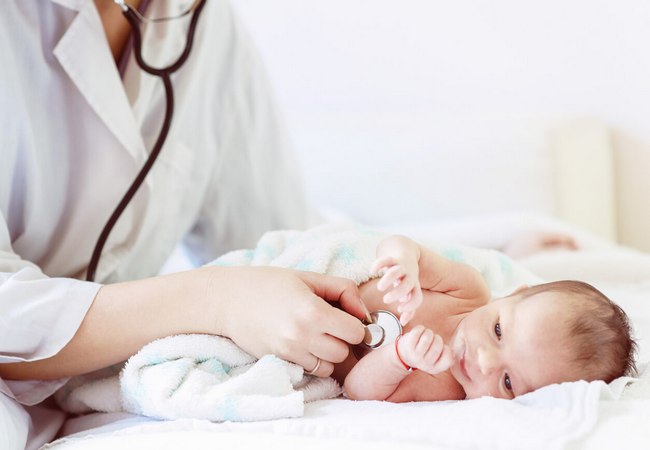Physical Examination of Newborn Baby: Method and Importance
Who is Newborn?
According to World Health Organization (WHO), a newborn infant, or neonate, is a child under 28 days of age. During these first 28 days of life, the child is at highest risk of dying. It is thus crucial that appropriate feeding and care are provided during this period, both to improve the child’s chances of survival and to lay the foundations for a healthy life.

How will You Examine a Newborn Baby?
Examine a newborn baby /Essentials of newborn assessment:
1. General examination:
A. Overall impression: face, trunk, limbs and activity to gain a general impression.
B. Skin colour:
- Pallor: Indicates anaemia, birth asphyxia.
- Cyanosis: Look for central and peripheral cyanosis.
- Jaundice
- Plethora: Commonly seen in polycythemia.
- Extensive bruising: Indicates difficult or traumatic delivery.
C. Skin rashes:
- Mongolian spots: Bruish spot commonly seen on the buttock or thigh.
- Milia: Seen in the nose, chicks and forehead.
2. Measurement:
- Birth weight,
- Occipito-frontal circumference (OFC),
- Length (If possible).
3. Examination of head and fontanelles:
Head:
- Cephal haematoma: Due to subperiosteal haemorrhage,
- Caput succedenum,
- Moulding: Seen in prolonged labor,
- Separation of suture lines.
Fontanelies:
- Large fontanelle: Due to hypothyroidism, chromosomal abnormality.
- Small fontanelle: Due to hyperthyroidism, micrcephaly.
- Depressed fontanelle: Due to dehydration.
- Bulging fontanele: Due to raised intracranial pressure.
- Eyes: Look discharge, inflammation, cataract9Red reflex), subconjunctival haemorrhage.
- Mouth: Look for cleft lip or palate, deciduous teeth, macroglossia, tongue tie.
- Chest: Check breathing pattern, any asymmetry, intercostals retraction.
- Upper limbs: Check for evidence of brachial palsy and extra digits.
- Heart: Rate, rhythm, presence of any murmurs.
- Abdomen: Any distension, palpation of liver, spleen, kidney and other mass.
- Umbilicus: Cleanliness, any signs of infection (Redness, discharge and bad smell).
- Genitalia: Normal or female. If female, small amount of mucous discharge perhaps with a few spots of blood may be seen. This is normal.
- Rectum and anus: Presence, patency and correct position.
- Femoral pulses: Feel
- Vertebral column: Palpate for any abnormality, spina bifida.
- Neurology: Is the baby behaving normally? Check morn and sucking reflexes. If any abnormality found, refer the baby to the paediatrician or health care facility.
Why Newborn Examination is Important?
Newborn examination is so much important due to the below reasons:
1. To identify the common neonatal problems covered in this tutorial include:
- Prematurity,
- Hypothermia,
- hypoglycemia,
- Asphyxia neonatorum,
- Jaundice,
- Transient tachypnoea of newborn,
- Birth injuries.
2. The purpose of the newborn physical examination is to assess the baby’s transition from intrauterine line to extrauterine existence and to detect congenital malformations and actual or potential disease.
3. The baby should be examined briefly immediately after birth. This should be confined to quick assessment of respiration, circulation, temperature, neurological status, and screening for anomalies or disease that might mandate emergency treatment.
4. The initial examination should be done with minimal disturbance to the baby, taking particular care to prevent excessive cooling from exposure.
5. A complete examination should be performed within the first 24 hours that indicates immediate care, safety and routine care of the child.

Maria Khatun Mona is a Founder and Editor of Nursing Exercise Blog. She is a Nursing and Midwifery Expert. Currently she is working as a Registered Nurse at Evercare Hospital, Dhaka, Bangladesh. She has great passion in writing different articles on Nursing and Midwifery. Mail her at “maria.mona023@gmail.com”
